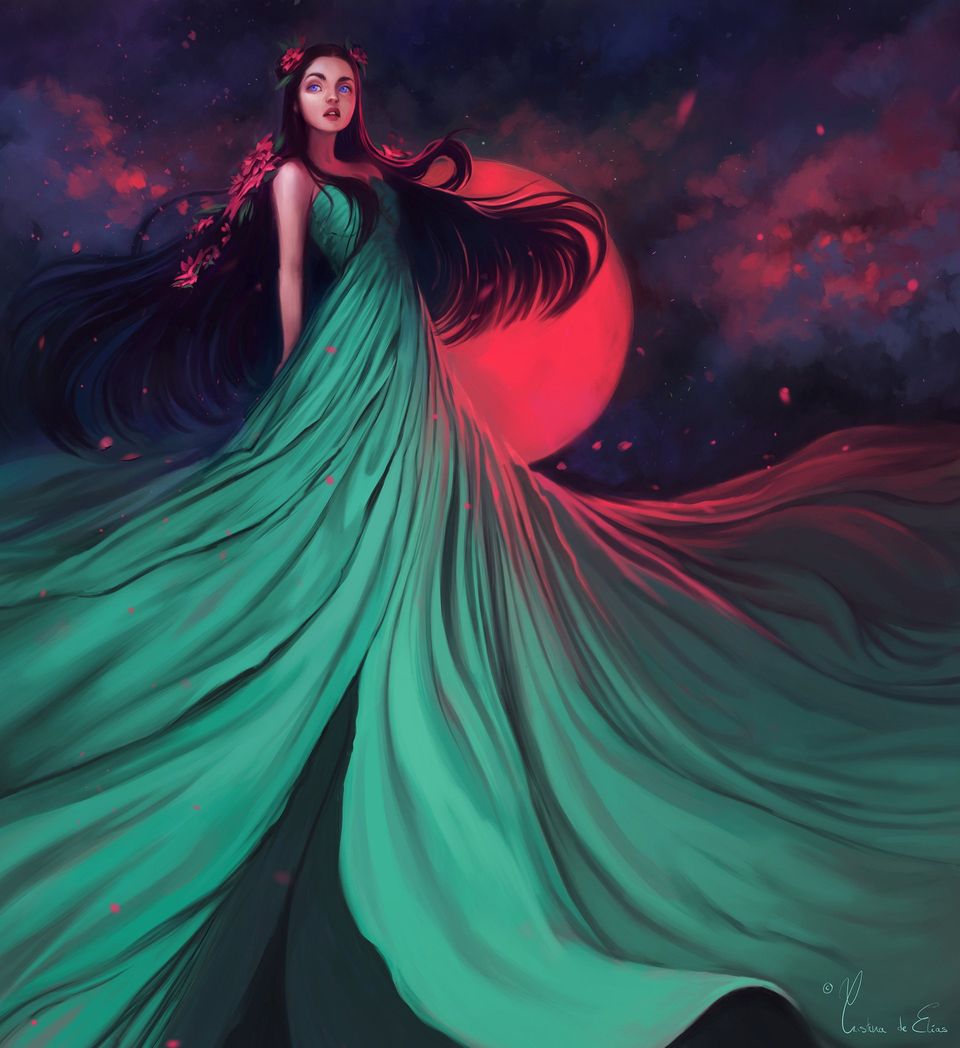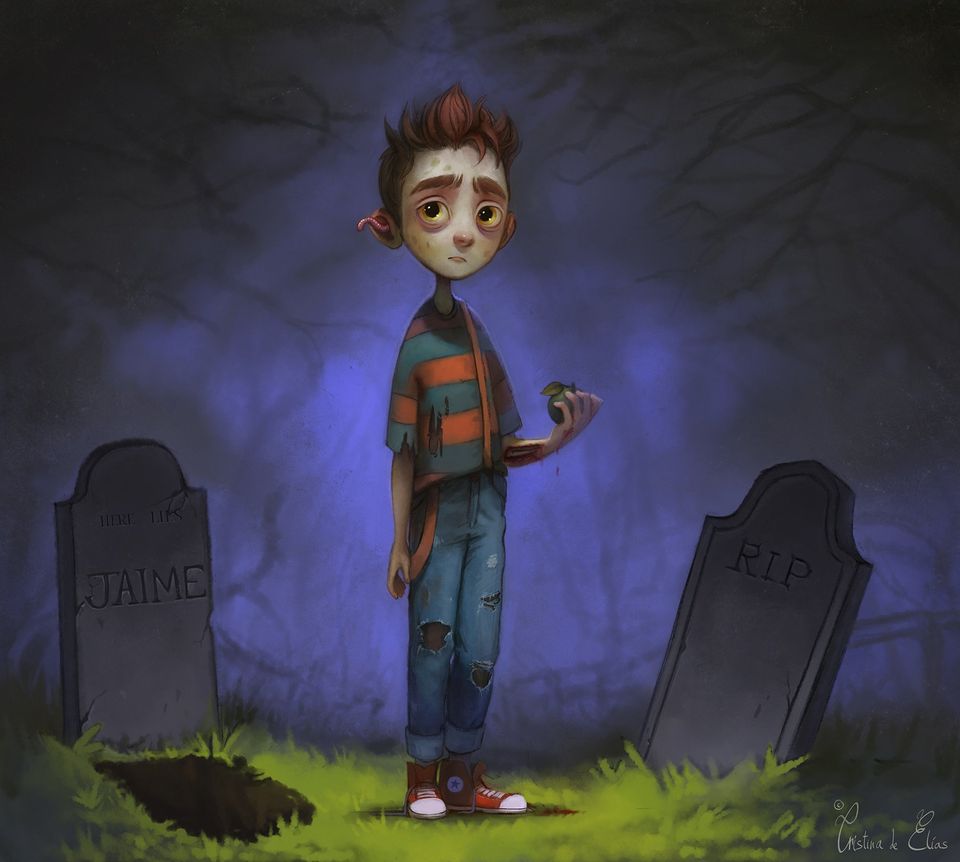Artist Spotlight: Cristina de Elias
Website Editor • February 26, 2020
Everyone’s work is deeply idiosyncratic: in our regular Spotlight segment we explore artists’ experiences and inspiration to understand what defines and inspires their unique styles.
Concept artist Cristina de Elias draws from literature, movies and modern technology to inspire and create her pieces.

Can you give us a brief background on yourself?
I’m an illustrator and concept artist born and raised in Barcelona, Spain. I manifested my passion for drawing when I was a little child. I knew I wanted this to be my profession the moment I learned you could make a living out of it.
Now that I’ve earned my bachelor’s degree in Fine Arts, I’m looking forward to investing all of my efforts into achieving my personal and professional goals as an artist. I’m currently working as an environment and character concept artist at 3D2Entertainment, and I am developing a fantasy video game named Arima.
What kind of influence does your location have on your career?
Many of the big studios I would one day like to work for, such as Disney, Pixar, Laika, Dreamworks, and many more, are located in the U.S. This makes it slightly harder for me to get an opportunity at one of the big studios, and would eventually require me to move there. However, thanks to technology and the internet, I can work on various projects with enterprises from all over the world as a freelance artist. Also, the internet is full of resources and online art schools through which we can compliment our education. As a result of this, the location one lives in definitely has a lower impact in an artist’s career than it did a few decades ago.
What is your greatest source of inspiration?
For me, anything that creates a sensorial stimulation can become a source of inspiration. Some examples of this would be music, literature, movies, other artists' work, a certain smell, a certain place, a color palette, nature. To be more specific, I’m especially moved by traditional tales, fairy tales, celtic folklore, romanticism, gothic literature, Tim Burton, Edwardian era, and Victorian era. Basically anything that incorporates a sense of nostalgia.
Could you pick one piece of art that has made a lasting influence on you, and if so why?
Charlie Bowater has always been one of my greatest influences. I was lucky to find her work on deviantart when I was just starting to get more serious about digital art. I learned a lot by observing and emulating her painting process. That definitely had a noticeable impact on my style. She did this piece called "Declan" back in 2009. I was 13 when I saw it for the first time, and I felt it really resonated with my own imagination and taste. I loved the concept, the composition, and the execution. I simply had a "This is the kind of art that I want to be able to create" moment.
What skills or techniques do you find most useful in your line of work? Do you use primarily traditional or digital methods to create your artwork?
To be an illustrator it is essential to know the fundamentals: anatomy, composition, light, color, etc. If you lack a good foundation you will encounter many obstacles on your way, which can easily lead to frustration because it cuts short your creative process and makes you feel stuck. I’ve learned this the hard way, and I’m still practicing and working towards building a solid base for myself. Mastering these essential skills gives you the ability to successfully replicate the images in your mind, which translates into a wider range of possibilities, more self confidence, and a greater sense freedom. I still draw traditionally from time to time, specifically on my sketchbook, but I mainly use digital methods.
How can people who are interested in discovering more of your work find it?
www.instagram.com/cristinadeelias
and Artstation www.artstation.com/cristinadeelias
accounts.
Scriba is a revolutionary digital stylus that is ergonomically designed to comfortably fit your hand and uses unique Squeeze-Motion technology. Order here.
Articles

The United Nations has described the disruption to education caused by the pandemic as ‘unparalleled’. At the virus’ worldwide peak in April, it is estimated that over 90% of all enrolled learners, from kindergarten to bachelors and beyond, had their education affected by school closures and the pandemic (UNESCO). For many university students and older children, they have had to adapt quickly to online learning. They can keep in touch with their peers and teachers online and continue their studies, albeit in a highly modified way. As challenging as this may be, this experience will help equip them for a future that is increasingly online. For parents of younger children, they are assuming a new role: their child’s home school teacher. This is in addition to their usual childcare and household duties, their work responsibilities and often emotional and financial worries caused by the pandemic. Stressful? Yes. The good, and somewhat surprising, news? The experts advise that you don’t teach your children - at least not in the way you might expect.

If the recent outbreak of Covid-19 has taught us anything, it's that many adults do not wash their hands effectively. It has never been more important that we support our children to develop good personal hygiene to keep themselves and our families safe. This seemingly easy task can be very difficult for children with fine motor skill difficulties. In this article, we explore some ideas to support your child with hand washing.

Lockdown has brought the digital future into the now. Online shopping, entertainment, education and more have moved from the periphery to the mainstream to, in many cases, the only option. With the necessity of social distancing looking to continue for many months, it appears that this rapid digital revolution is here to stay. This means that life as we know it, in most of its sectors, has changed forever. In order to survive, businesses are having to adapt rapidly, embrace technology and look to the future. Architecture is no exception. There has been a widespread adoption of technology and VR over the past few months in response to the lockdown across all of society. Elderly grandparents who were once resistant to adopt new technologies talk of “Zooming” and have started video chatting with their family members to combat loneliness. Art galleries that were once considered stuffy or pretentious are now pioneers in VR technology, with Google Art & Culture offering tours of London’s National Gallery or the Musee D’Orsay in Paris. These virtual tours deliver art in a dynamic new way that can be far more engaging than regular photos. Critics have applauded the panoramic and immersive views of gallery building and exhibitions which work well for rendering of 2 dimensional art, however impressions of sculpture is somewhat lacklustre. With VR technology, users can enjoy a truly immersive experience in the comforts, and safety, of their own home. The COVID-19 pandemic has served as an accelerant for the arts and entertainment industries to embrace VR.





